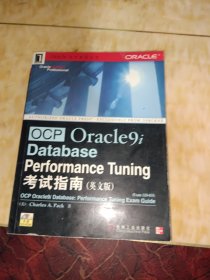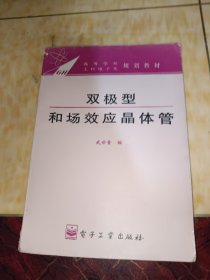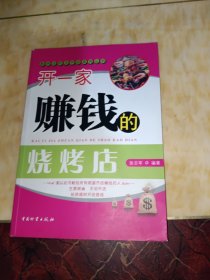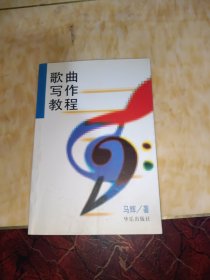
OCP Oracle9i Database Performance Tuning考试指南
¥ 9 1.2折 ¥ 78 九品
仅1件
北京东城
认证卖家担保交易快速发货售后保障
作者[美]派克 著
出版社机械工业出版社
出版时间2002-08
版次1
装帧平装
货号031
上书时间2024-03-15
- 在售商品 暂无
- 平均发货时间 9小时
- 好评率 暂无
- 最新上架
商品详情
- 品相描述:九品
图书标准信息
- 作者 [美]派克 著
- 出版社 机械工业出版社
- 出版时间 2002-08
- 版次 1
- ISBN 9787111104490
- 定价 78.00元
- 装帧 平装
- 开本 其他
- 纸张 胶版纸
- 页数 470页
- 【目录】
- ACKNOWLEOGMENTSINTROOUCTIONPART IOCP Tuning Exam Guide1 Database Tuning OverviewHow This Book Is OrganizedTopics Covered in the OCP OBA Tuning ExamThe Oracle Performance Tuning MethodoiogyDiagnostics and Tuning ToolsSizing the Shared PoolSizing the Buffer CacbeSizing Other SGA StructuresDatabase Configuration and I/O lssuesOptimizing Sort OperdtionsDidgnosing Contention for LatchesTuning Rollback or UNDO SegmentsMonitoring and Detecting Lock ContentionTuning Oracle Sbared ServerApplication TuningUsing Oracle Blocks EfficientlySQL Statement TuningOS ConsiderationsTuning OverviewWhy Do We Performance Tune?What Is Performance Tuning?Where Do I Tune7How Do I Performance Tune?When Do I Tune?How Do I Know If My Performance Tuning Efforts AreActually Working?To Advance Your Tuning Knowledge2 Oracle Performance Tuning MethodologyOracle Performance Tuning MethodDescribe the Roles Associated with the Database Tuning ProcessDescribe the Dependency Between Tuning in DifferentDeve1opment PhasesDescribe SLAsDescribe the Tuning GoalsDescribe the Most Common Tuning ProblemsDescribe Tuning Goals Associated with Different Typesof ApplicationsPerformance and Safety Trade-OffsChapter SummaryTwo-Minute DrillChapter QuestionsAnswers to Chapter Questions3 Diagnostic and Tuning ToolsDiagnostic and Tuning ToolsThe Data Dictionary and Dynamic Performance Views Related to TuningData Dictionary ViewsHow the ANALYZE Command Is Used with DataDictionary ViewsDynamic Performance ViewsCurrent State ViewsAccumulator ViewsInformational ViewsStatistics in the Dynamic Performance ViewsInstance/Database Performance ViewsMemoryDiskContentionSession-RelatedWhat Is Statspack?Installing and Configuring StatspackInteractive or Batch InstallationsStatspack MaintenanceConfiguring Statspack Statistics GatheringCollect Statistics Using StatspackTake a SnapshotAutomating SnapshotsProducing a Performance ReportContents of the Statspack Performance ReportOther Tools That Can Be Used for TuningUTLBSTATUTLESTATOEM Oracle ExpertCustom ToolsThe A1ert Log and Trace FilesInstance Alert LogTrace User SQLChapter SummaryTwo-Minute DrillChapter QuestionsAnswers to Chapter Questions4 Sizing the Shared PoolSizing the Shared PoolShared Pool ConceptsMeasure and Tune the Library Cache Hit RatioSize and Pin Objects in the Shared PoolTune the Shared Pool Reserve SpaceMeasure and Tune the Dictionary Cache Hit RatioDescribe UGA and Session Memory ConsiderationsSetting the Large PoolChapter SummaryTwo-Minute DrillChapter QuestionsAnswers to Chapter Questions5 Sizing the Buffer CacheSizing the Buffer CacheDescribe How the Buffer Cache Is Used by DifferentDracle ProcessesDescribe the Tuning lssues Related to the Buffer CacheCetting Advice about the Buffer Cache SizeImplement Dynamic SGA AllocationMonitor the Use of the Buffer Cache and the DifferentPoo1s Within the Buffer CacheCreate and Size Multiple Buffer PoolsMake Appropriate Use of Table CachingDiagnose LRU Latch ContentionDiagnose Freelist ContentionDeprecated Buffer Cache ParametersChapter SummaryTwo-Minute DrillChapter QuestionsAnswers to Chapter Questions6 Sizing Other SGA StructuresSizing Other SGA StructuresMonitor and Size the Redo Log BufferMonitor and Size the Java PoolLimit the Amount of Java Session Memory Used by a SessionConfiguring I/O SlavesConfiguring Multiple DBW ProcessesChapter SummaryTwo-Minute DrillChapter QuestionsAnswers to Chapter Questions7 Database Configuration and I/O lssuesDatabase Configuration and I/O IssuesDescribe Reasons for Distributing Different Oracle File TypesDiagnose Inappropriate Use of TablespacesTune Full Table Scan OperationsDescribe How Checkpoints WorkMonitor and Tune CheckpointsMonitor and Tune Redo LogsChapter SummaryTwo-Minute DrillChapter QuestionsAnswers to Chapter Questions8 Optimize Sort OperationsOptimize Sort OperationsDescribe How Sorts Are Performed in OracleSet Old and New Sort ParametersDescribe the Operations That Cause SortingDifferentiate Between Disk and Memory SortsCreate and Monitor Temporary TablespacesDescribe Ways to Reduce Total Sorts and Disk SortsChapter SummaryTwo-Minute DrillChapter QuestionsAnswers to Chapter Questions9 Diagnosing Contention for LatchesDiagnosing Contention for LatchesDescribe the Purpose of LatchesDescribe the Different Types of Latch RequestsDescribe How to Diagnose Contention for LatchesIdentify the Resources to Be Tuned to Minimize Latch ContentionChapter SummaryTwo-Minute DrillChapter QuestionsAnswers to Chapter Questions10 Tuning Rollback or Undo SegmentsTuning Rollback/Undo SegmentsUse the Dynamic Performance Views to Check RollbackSegment PerformanceDefine the Number and Size of Manual Rollback SegmentsAppropriately Allocate Rollback Segments to TransactionsUnderstand and Expiain the Concept of Automatic UndoManagementCreate and Maintain Automatically Managed Undo Tablespace.Chapter SummaryTwo-Minute DrillChapter QuestionsAnswers to Chapter Questions11 Monitoring and Detecting Lock ContentionMonitoring and Detecting Lock ContentionDefine Levels of LockingDescribe PossibIe Causes of ContentionUse Oracle Utilities to Detect Lock ContentionResolve Contention in an EmergencyPrevent Locking ProblemsRecognize Oracle Errors Arising from DeadlocksChapter SummaryTwo-Minute DrillChapter QuestionsAnswers to Chapter Questions12 Tuning Oracle Shared ServerTuning Oracle Shared ServerIdentifying Issues Associated with Managing Users in aShared Server EnvironmentDiagnosing and Resolving Performance Issues withShared Server ProcessesConfigure the Shared Server Environment to OptimizePerformanceChapter SummaryTwo-Minute DrillChapter QuestionsAnswers to Chapter Questionsl3 Application TuningApplication TuningDescribe the Role of the DBA in Tuning ApplicatiorExplain Different Storage StructuresExplain and Describe Clustering OptionsExplain the Different Types of IndexesExplain IOTsDescribe Materialized Views and the Use of Query RewritesList Requirements for OLTP, DSS, and Hybrid SystemsChapter SummaryTwo-Minute DrillChapter QuestionsAnswers to Chapter Questionsl4 Using Oracle Blocks EfficientlyUsing Oracle Blocks EfficientlyDescribe the Correct Usage of Extents and Oracle BlocksExplain Space Usage and the High WatermarkDetermine the High WatermarkRecover Space from Sparsely Populated SegmentsDescribe the Use of Oracle Block ParametersDescribe and Detect Chaining and Migration of Oracle BlocksPerform Index ReorganizationMonitor Indexes to Determine UsageChapter SummaryTwo-Minute DrillChapter QuestionsAnswers to Chapter Questions15 SQL Statement TuningSQL Statement TuningDescribe How the Optimizer Is UsedExplain the Concept of Plan Stabi1ity.Use of Stored OutlinesDescribe How Hints Are UsedCollect Statistics on Indexes and TablesDescribe the Use of HistogramsCopy Statistics Between DatabasesOLTP and OSS ConsiderationsUse SQL Trace and TKPROFChapter SummaryTwo-Minute DrillChapter QuestionsAnswers to Chapter Questions16 OS Considerations and Oracle Resource ManagerOS ConsiderationsDescribe Different System ArchitecturesUnderstand Virtual Memory and PagingDescribe the Primary Steps of OS TuningIdentify Similarities Between OS and DB TuningExplain the Difference Between a Process and a ThreadDatabase Resource ManagerConfiguring Resource ManagementAdminister Resource ManagerChapter SummaryTwo-Minute DrillChapter QuestionsAnswers to Chapter QuestionsPART IIPractice Exams17 Practice Exam I and 2Practice Exam 1 QuestionsAnswers to Practice Exam 1 QuestionsPractice Exam TwoPractice Exam 2 QuestionsAnswers to Practice Exam 2 QuestionsGlossaryIndex
点击展开
点击收起
— 没有更多了 —








![人体雕塑与模特:[摄影集]](https://www0.kfzimg.com/sw/kfz-cos/kfzimg/ecbecdcd/d2d985dd50b93acc_s.jpg)






以下为对购买帮助不大的评价